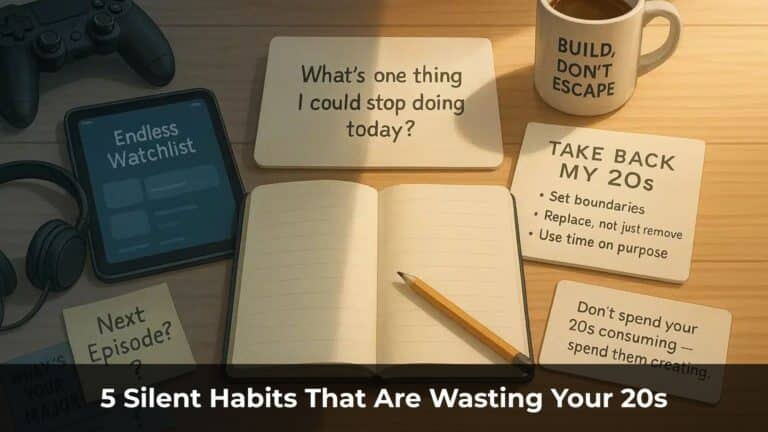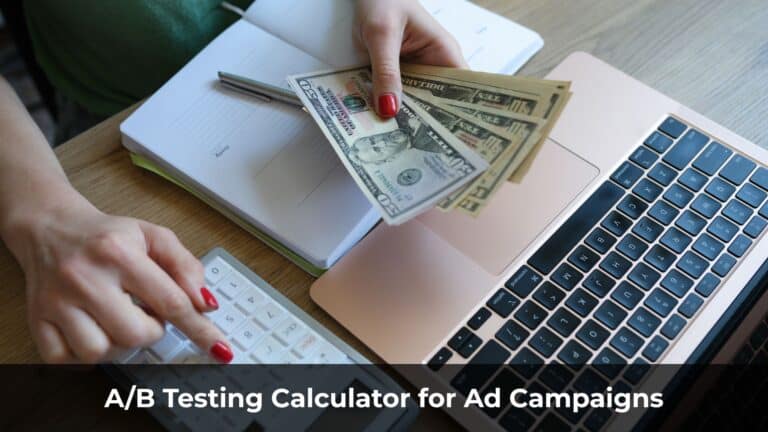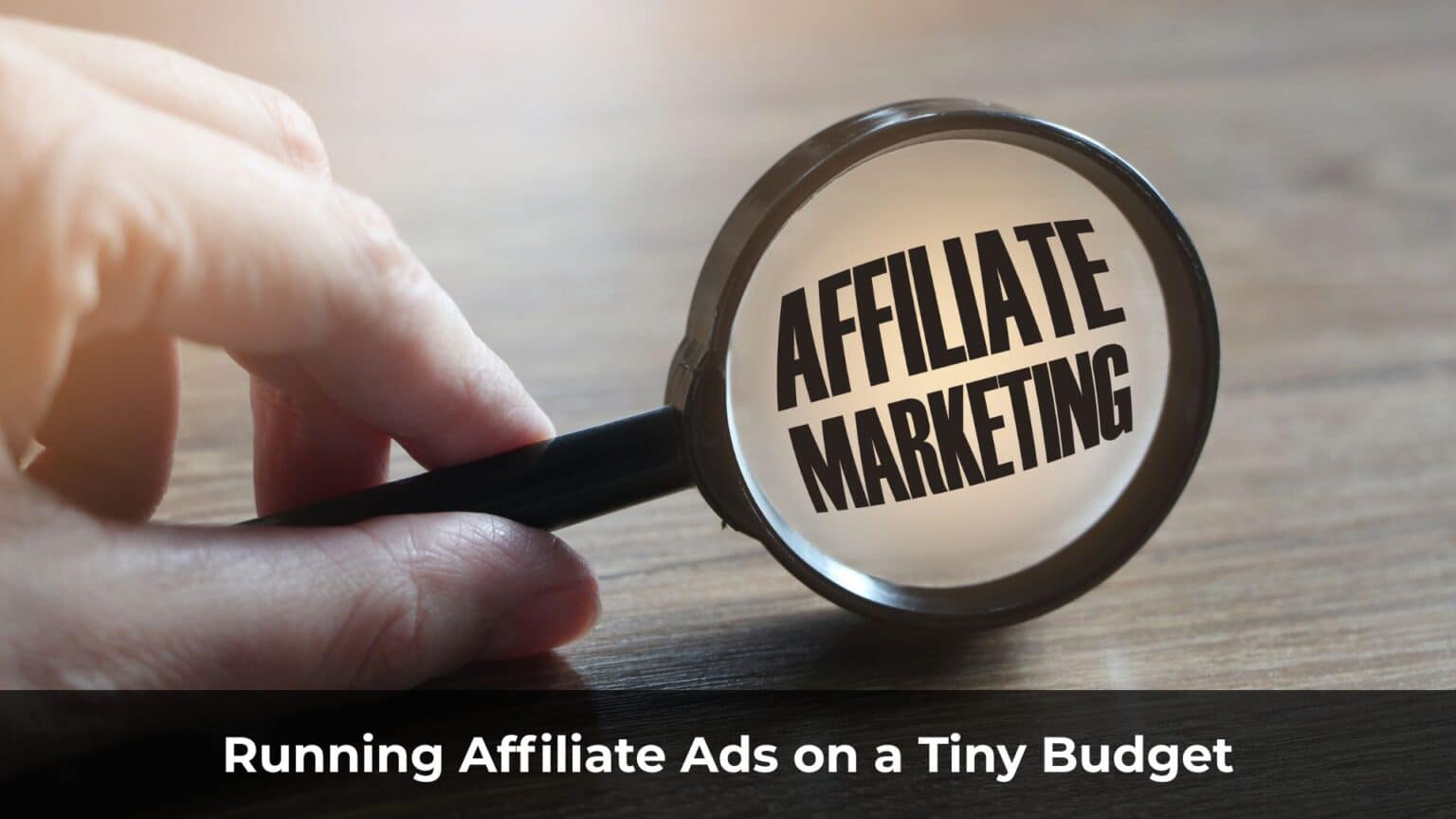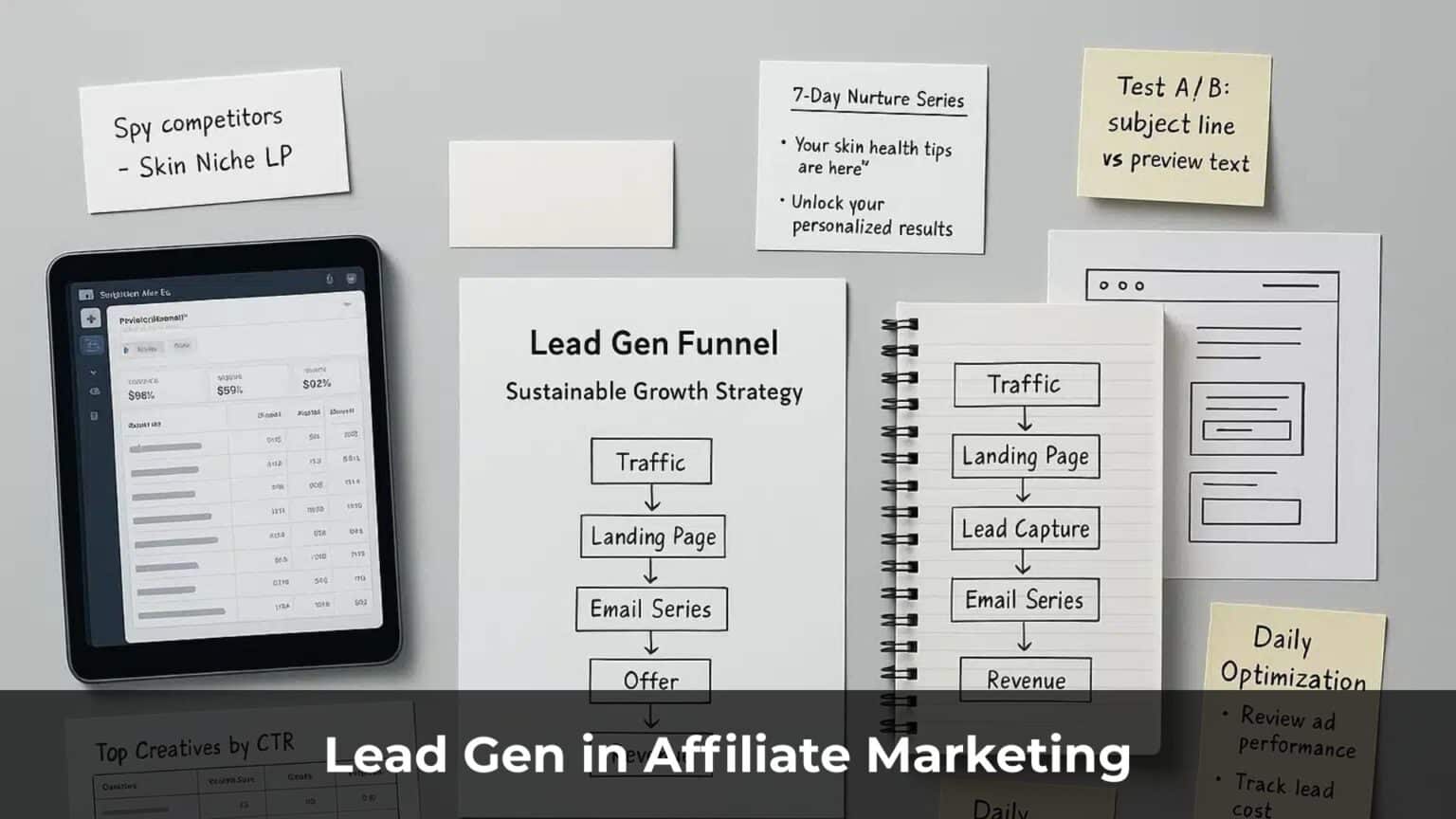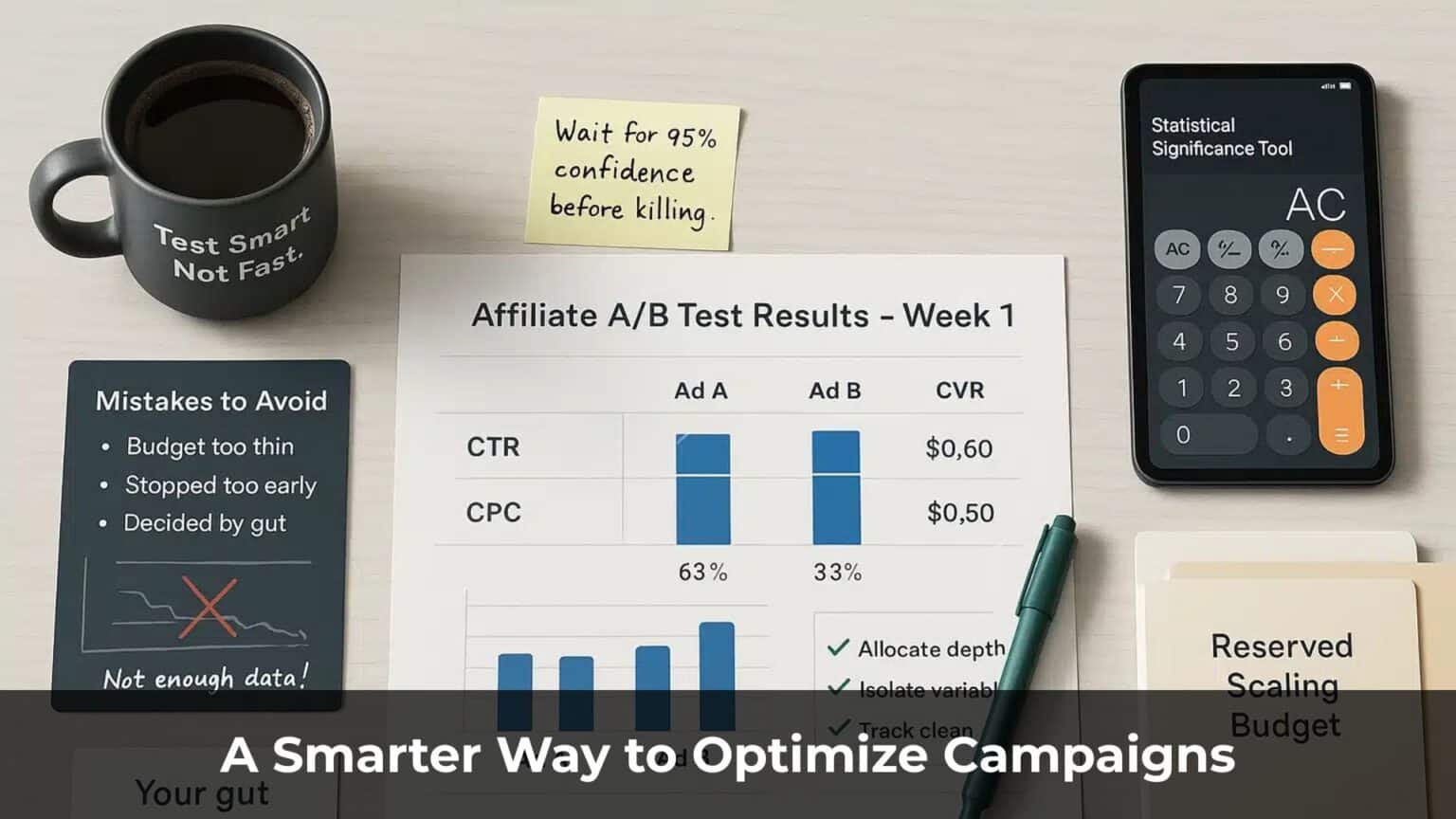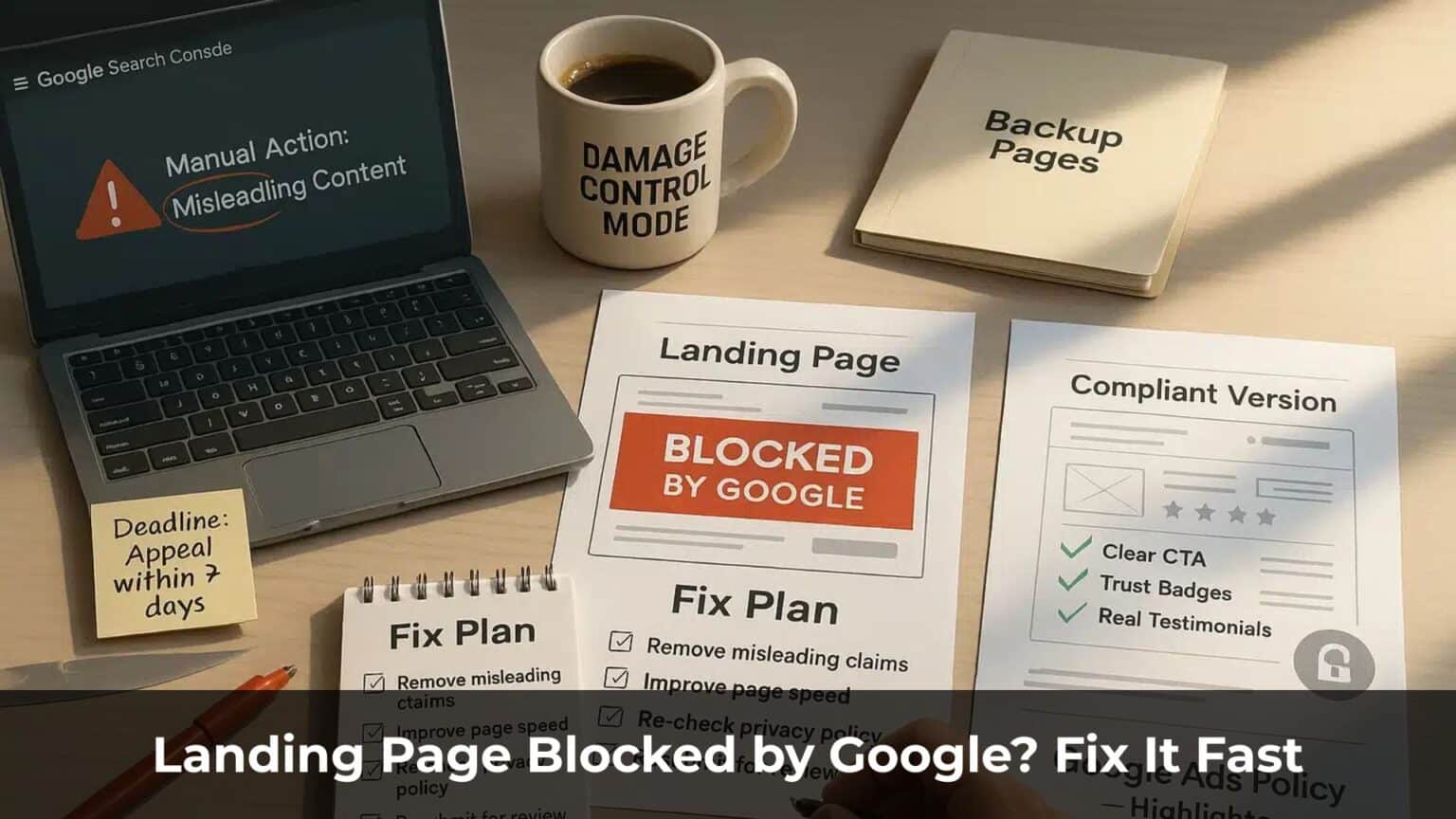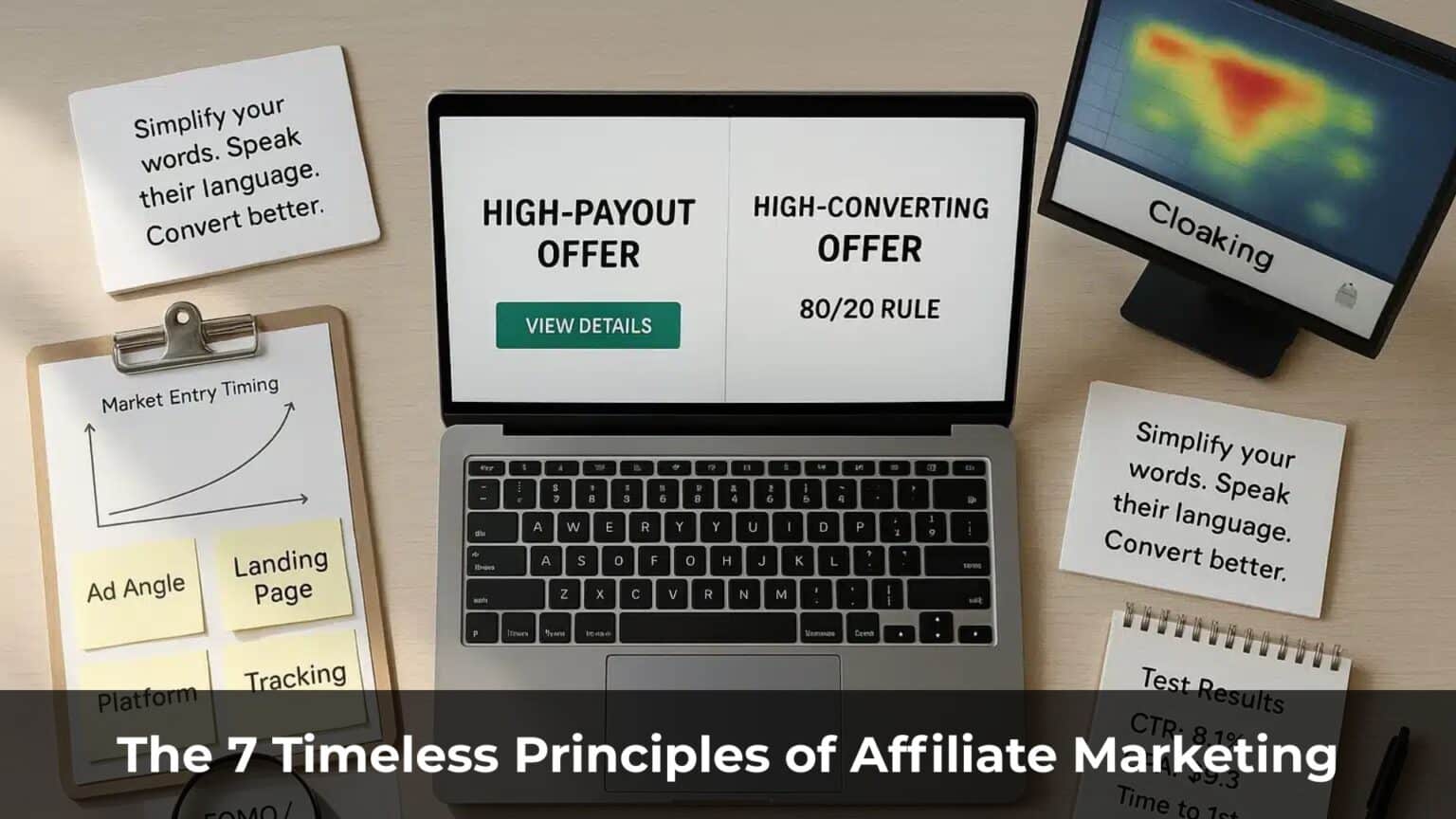In affiliate marketing, your landing page isn’t just important — it’s make-or-break.
You can choose the perfect product, target the right audience, and write compelling ads. But if your landing page doesn’t convert, none of that matters.
Still, many affiliates skip this step. They send traffic directly to the offer, avoiding the work of building a proper landing page.
Others copy their competitor’s page word for word — without testing, without tweaking. And that’s exactly what’s limiting their profits.
Here’s the truth: Sometimes, a few smart changes are all it takes to turn a failing campaign into a winner.
Entire niches have taken off just because someone built a high-converting landing page.
In this post, I’ll share proven optimization techniques that can increase your conversions and seriously boost your ROI.
Table of Contents
ToggleTactic #1: Create Urgency with Scarcity (FOMO)
Nobody likes to miss out on a great deal.
That’s why savvy marketers launch offers with phrases like “Only available for 24 hours” or “Price increases in just a few hours.”
This taps into urgency — prompting users to act now or lose the opportunity for good.
Here are practical ways to apply this tactic on your landing page:
Add a countdown timer: “Offer expires in 5 minutes.” “Sale ends in 12 hours.” “Only a few items left.”
Limit quantity: “Only 5 units remaining.” “Next 10 signups only.”
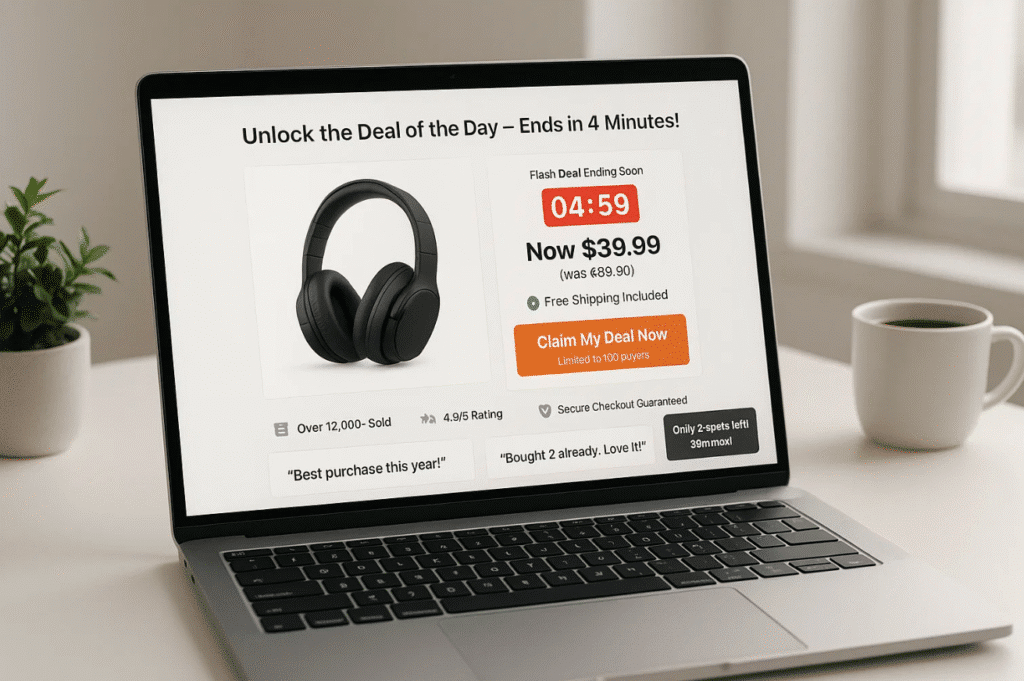
But here’s the key: urgency only works when it’s believable.
Today’s users are smart — and tired of cheap tricks. So give them a reason. Be transparent. For example:
System-based limit: “We’re only opening this offer to the first 100 customers — after that, the system will automatically close to process existing orders.”
This shows real scarcity, not fake pressure.
Deadline for fairness: “This special price expires at 11:59 PM today to ensure fairness for early buyers.”
Concrete deadline + fair reasoning.
Limited spots for quality: “We’re only accepting 30 students — to maintain high-quality support for everyone.”
This frames the limit as a commitment to value, not a gimmick.
Tactic #2: Leverage Social Proof to Build Trust
Social proof is one of the most powerful persuasion tools in marketing — because people trust people. When buyers are unsure, they often look for signals from others to guide their decisions.
No one wants to make a bad call. So when others say something is good, it feels safer to buy.
A few real-world examples:
- On Amazon, people hunt for “Best Seller” or “Top Rated” tags. If thousands approve it, it must be good.
- Some clubs hire people to stand in line outside — just to create buzz.
- Even when grabbing a bowl of noodles in Vietnam, I’d choose the crowded spots — because the crowd usually means quality.
That same principle applies to your landing page.
With the right social proof, you reduce doubt and accelerate decisions.
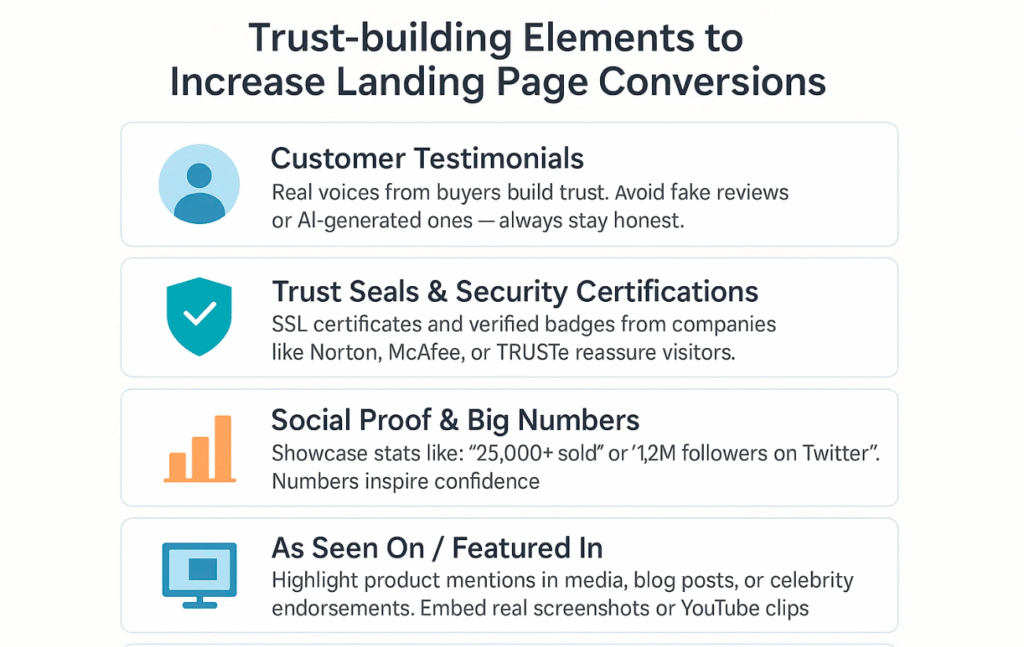
Here’s what you can use:
Customer Testimonials: Ask your advertiser for real user feedback. It works.
(Avoid fake or AI-generated reviews — they’re lazy, risky, and dishonest.)
Trust Badges: Logos, security certificates, or “Verified by…” symbols — small but powerful trust signals.

Popularity Indicators: “Over 25,000 copies sold.” “NYT Bestseller.” Follower count or social likes can work too.
As Seen On: If a blogger, influencer, or media outlet has mentioned the product, show it. Add screenshots, clips, or direct quotes.
Just remember: Misleading claims aren’t just unethical — they can get you sued. Play it smart. Keep it real.
Tactic #3: Personalize Content Using GEOIP
GEOIP lets you detect where your visitors are — down to the city or even zip code.
Used right, it adds a layer of personalization that creates familiarity and drives conversions.
Real-world use cases:
- For dating offers: “We found over 200 active members near Brooklyn, New York.”
- For insurance offers: “Special rates available for drivers in Texas.”
- For local promos: “Live near 90210? Claim your exclusive gift today.”
Important note:
Make sure you comply with privacy regulations like GDPR and CCPA — and avoid faking location-based content.
Transparency builds sustainable trust.
Popular GEOIP tools include IPinfo.io, MaxMind, and GeoJS — both free and paid options are available.
Pro tip:
Don’t use this tactic with Facebook or Google Ads — it may get your ads flagged. But it works great with native ads and email marketing — where personalization really pays off.
Tactic #4: Align Landing Page Design with Traffic Source
Your funnel looks like this:
Traffic Source → Landing Page → Offer Page
To boost conversions, make your landing page visually aligned with either the traffic source or the offer page. This consistency builds trust and makes the transition feel natural.
For example:
Running Facebook Ads?
Use a blue or white color scheme — it matches Facebook’s interface and feels familiar to the user.
Promoting a survival product?
Mirror the look and feel of the offer page. Use similar imagery to create a strong visual connection between your page and the product.
You should optimize colors, layout, visuals, and fonts — anything that helps users instantly feel at ease the moment they land.
But here’s a key reminder:
Just because a landing page looks good doesn’t mean it will perform well.
You still need to test and find the real winner.
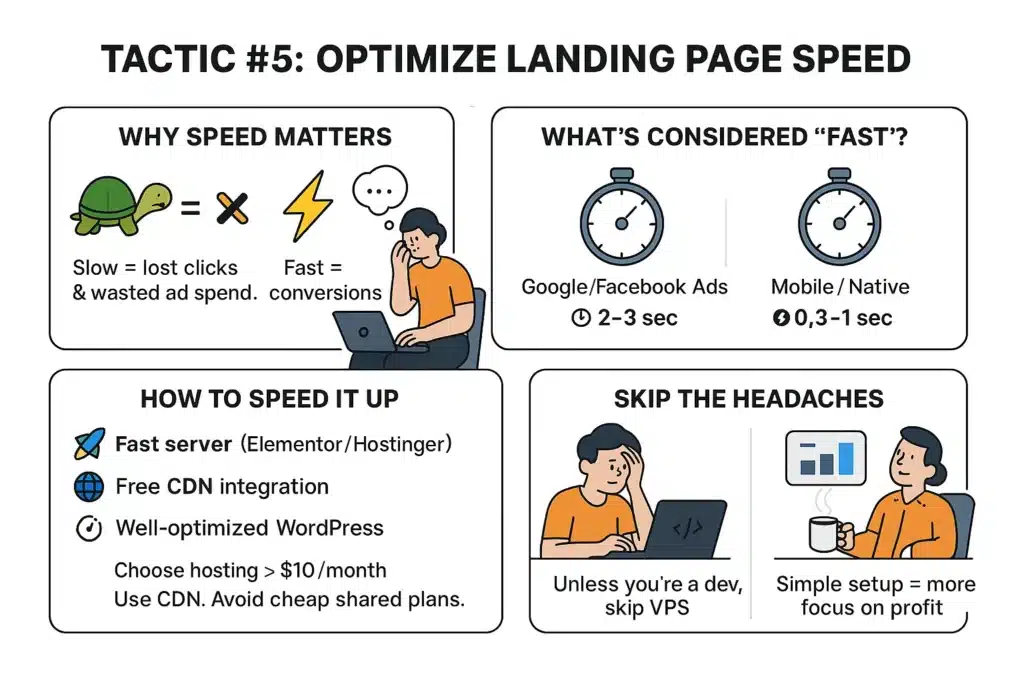
Tactic #5: Optimize Landing Page Loading Speed
A slow website = wasted ad spend.
Imagine this: someone in Brazil clicks your ad using slow internet and an outdated laptop. The page takes too long to load… so they hit the back button Just like that — you’ve lost a click and a few cents (or dollars) down the drain.
But if your landing page is optimized, it shows up instantly — and the customer stays.
So yes, speed matters. But what counts as “fast”?
It depends on your traffic source:
- Google or Facebook Ads: aim for a load time under 2–3 seconds.
- Native or mobile traffic: shoot for under 1 second. On mobile, the sweet spot is around 0.3 seconds.
So, how can you actually improve your landing page speed?
Get a faster, stronger server
Over the years, I’ve tested every type of hosting — shared, VPS, cloud… even ran a hosting site myself. So trust me when I say this:
If you’re running paid traffic on Google or Facebook, all you need is a well-optimized WordPress site. That alone can get you a load time of 1.5 to 2.5 seconds.
Don’t bother with VPS unless you know how to code.
It’s a headache to set up, and if you break something, you may have no idea how to fix it.
I’ve had my fair share of sleepless nights trying to debug VPS servers — it’s not fun.
So learn from my mistakes.
Of course, if you’re a developer, VPS gives you more control and speed.
But for most affiliate marketers, I highly recommend Elementor Hosting or Hostinger.
Choose plans above $10/month, or if you’ve got the budget, go for $50+/month for even better performance.
Also: if you’re running international campaigns, a quality CDN is a must.
Both Elementor and Hostinger offer free CDN integration — which makes a big difference.
Reduce Landing Page Size
One of the most common reasons your page loads slowly is large image files.
That’s why image compression is a must.
Use desktop tools or online image compressors to reduce file size before uploading.
Never use images larger than 1MB on your landing page.
Aim for 100–300 KB per image — just enough to look sharp without slowing things down.
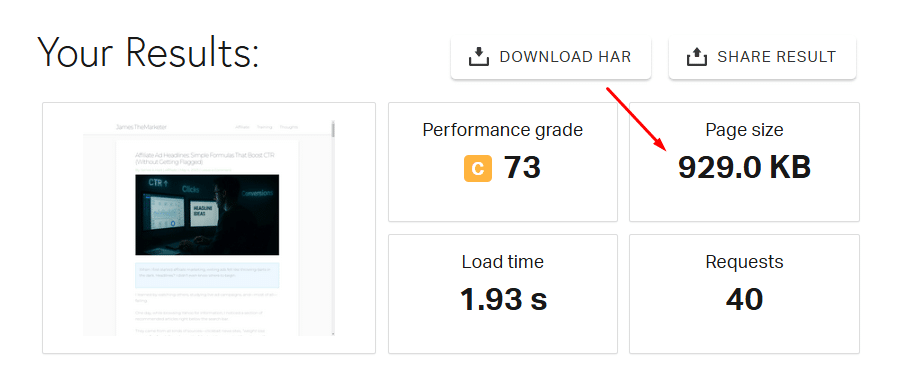
You should also convert your images to WebP format, which is lighter and loads faster.
If you’re using WordPress, Imagify is a great plugin that can compress images and convert them to WebP automatically.
One important note: if you’re “borrowing” someone else’s landing page and the code looks messy — rebuild it from scratch. Dirty code can hide malicious scripts — and you don’t want to deal with that mess.
If you’re using WordPress, the better route is to study your competitor’s layout and recreate your own version.
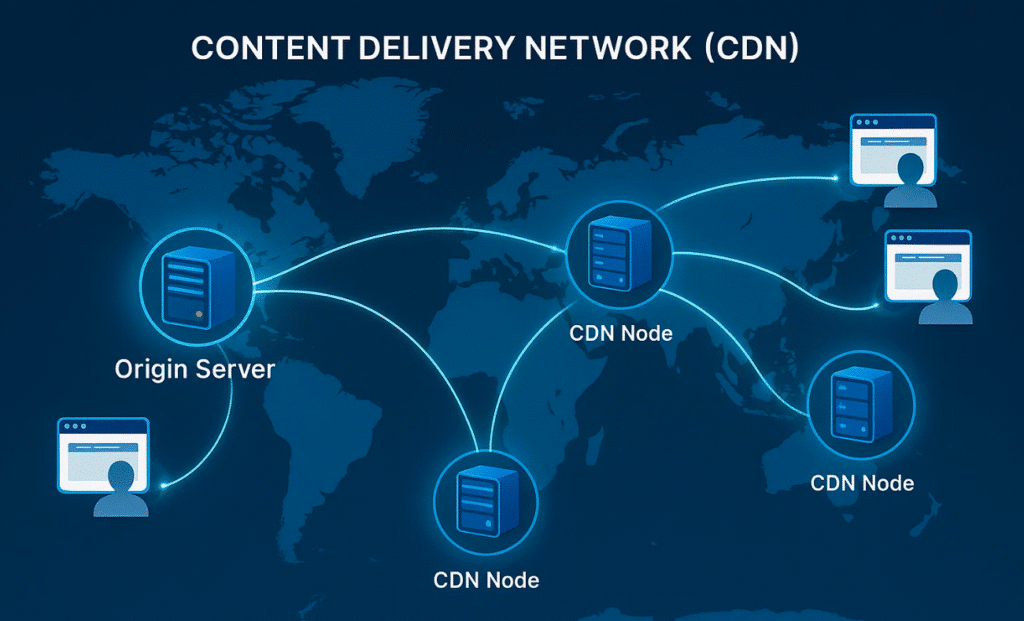
Use a CDN to Speed Things Up
CDN stands for Content Delivery Network.
Let’s say your server is in New York, but you’re driving traffic from all over the world. For visitors from Europe, Asia, or South America — your website will load slowly.
A CDN fixes this by distributing your site across multiple global servers.
So if someone visits from Brazil, they’ll load your page from a local Brazilian server, not New York.
If you use Elementor Hosting, the good news is:
They’ve already integrated a high-quality CDN for you.
Just buy the hosting, and their system automatically enables Cloudflare Enterprise CDN — no setup required.
Back when I started affiliate marketing, I struggled to configure CloudFront CDN manually.
Today? Thankfully, those days are over.
Quick note:
If your site is still slow even with a CDN, check your server’s location.
If you’re running ads in Europe, buy hosting with a European data center.
Speed isn’t just about bandwidth — server location still makes a real difference.
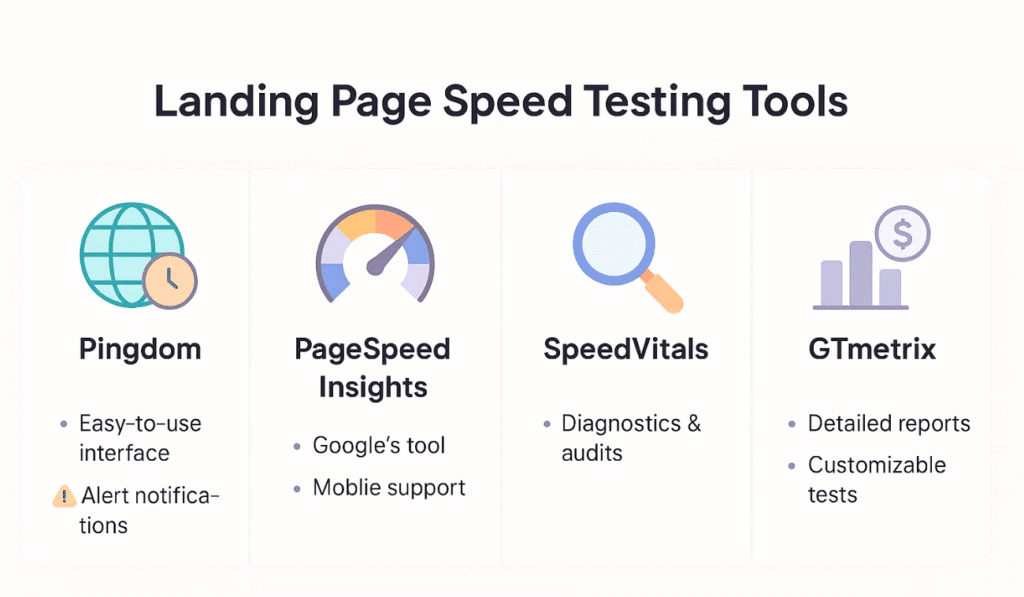
Test Your Landing Page Speed Before Launching
Before launching any campaign, make sure your landing page speed is tested — and tested right.
If it’s still slow, keep optimizing until it’s fast enough to keep users engaged.
Here are some tools I regularly use:
Pingdom – A free and reliable tool. You can test from different regions: the US, Europe, and Asia.
The downside? It only measures full page load time, which isn’t always the key metric.
What really matters is how fast the top section appears — because that’s what users see first.
If the page feels fast, they stay. Everything else can load in the background.
That’s why you should look at metrics like:
- FCP (First Contentful Paint) – How quickly something appears on screen
- LCP (Largest Contentful Paint) – How fast the main content becomes visible
To measure that, I also use:
PageSpeed Insights – A free Google tool that shows detailed Core Web Vitals: FCP, LCP, CLS, and even actionable suggestions. Includes mobile testing too — very helpful for mobile ad campaigns.
SpeedVitals – Clean, user-friendly, and offers 30 free tests per week. They also have a monitoring feature to track ongoing performance.
GTmetrix – I’ve stopped using this one. They began charging for features that were previously free, which reduced the value.
Each tool has its pros and cons.
But don’t chase perfect scores. Focus on how fast your page feels — because that’s what actually converts.
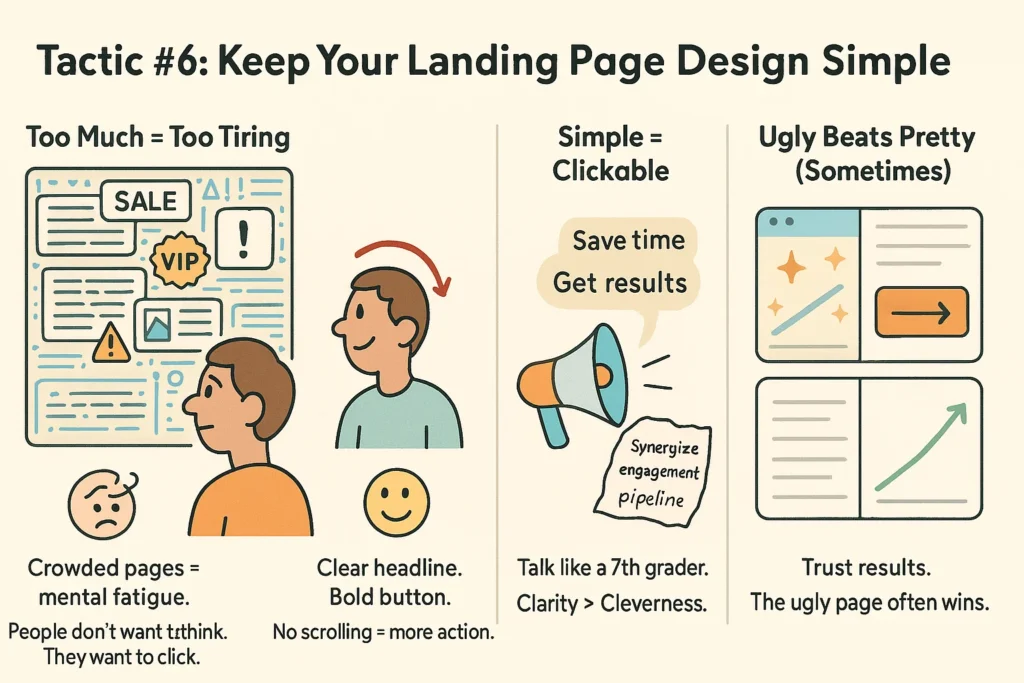
Tactic #6: Keep Your Landing Page Design Simple
When I first started building landing pages, I overthought everything. I wanted them to look amazing — polished, stylish, impressive.
But the results? Terrible conversion rates.
Here’s the truth:
It doesn’t matter how pretty your landing page is — it matters how useful and easy it is for people to use.
Most people today are mentally tired. They don’t want to think.
So the simpler your landing page is, the more likely it will convert.
Here are some battle-tested design tips:
- Put the most important elements at the top – headline, image, and core value prop should be visible without scrolling.
- Make your CTA button obvious – large, bold, and in a contrasting color. You can even add a cartoon arrow pointing to it.
- Use simple language – write as if you’re speaking to a 7th grader. Clarity beats cleverness.
- Watch your formatting – today’s readers won’t go through big blocks of text. Break things up. Add images. Highlight key phrases.
- Animated visuals? Sure, but only if they’re optimized – compress them properly and enable lazy loading to avoid slowing down the page.
I’ve seen it over and over again: the “ugly” landing page often outperforms the fancy one. Don’t trust your gut. Trust the data. Test everything.
And above all: Less is more.
Fewer words. More conversions.
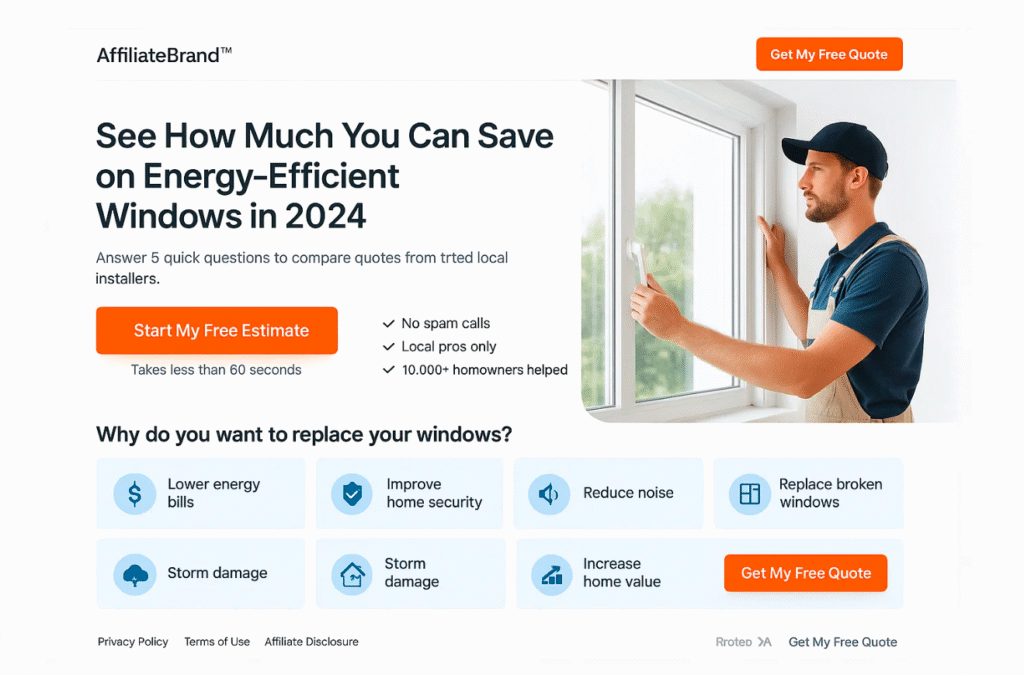
Tactic #7: Conduct Daily Affiliate Campaign Testing
I’ve seen far too many people waste money on flashy, overdesigned landing pages — simply because they didn’t test enough. Many affiliates just copy a page they saw someone else use and throw it into an ad campaign.
But just because a landing page is widely used doesn’t mean it’s the most profitable one.
Let’s say Affiliate A builds a decent-looking page and runs it hard.
It makes money — not because the page converts exceptionally well, but because the offer, ad creative, and targeting are all on point.
Then Affiliates B, C, and D spot that same landing page on spy tools, assume it’s a “winning page,” and copy it for their own campaigns.
But what they’re copying might just be the bare minimum that works — not the best version possible.
Personally, when I see a landing page popping up everywhere on spy tools, I treat it as the baseline.
Then I go to work: testing, improving, and upgrading.
So what can you optimize?
- The headline, to boost attention
- The overall page layout
- Background colors
- Images and CTA buttons
- Embedded scripts or tracking code
- … and anything else that could move the needle
Make testing a daily habit.
The more you test, the more you learn — and the more profitable your campaigns become.
Tactic #8: Implement Multivariate Testing for Rapid Optimization
A/B testing is where most people start — and often, where they stop.
They tweak one element (like a headline), compare two versions, and wait for a winner. That’s called a split test.
It works. But if you’re short on time or want to go deeper, try multivariate testing.
Instead of testing one element at a time, multivariate testing lets you test multiple elements together — like your headline + CTA button + image.
It’s faster. And smarter.
Tools like Visual Website Optimizer and Optimizely make it easy to find the best-performing combination — fast.
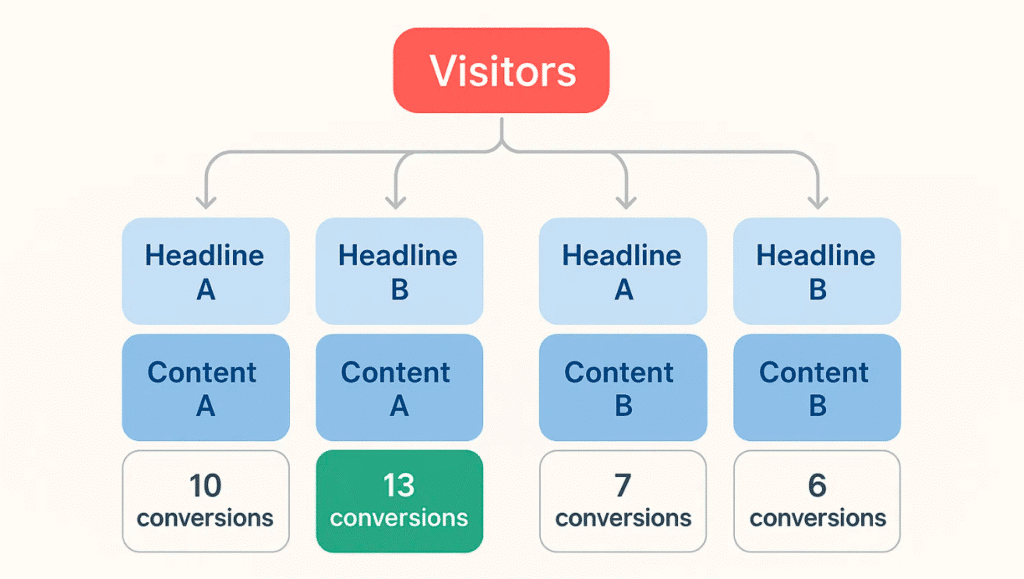
With multivariate testing, you’re not just testing faster — you’re testing smarter.
Final Thoughts…
Learning to test your landing pages isn’t just a one-time skill — it’s a long-term investment in your marketing career.
This isn’t guesswork. It’s data-backed growth.
Every test brings you one step closer to a profitable campaign.
No wasted spend. No blind shots. Just clarity, precision, and results.
If this guide helped you, share it with fellow affiliates.
One simple share might save someone thousands in ad spend — or turn a struggling campaign into a winner.
Here’s to smarter testing — and higher conversions ahead.

